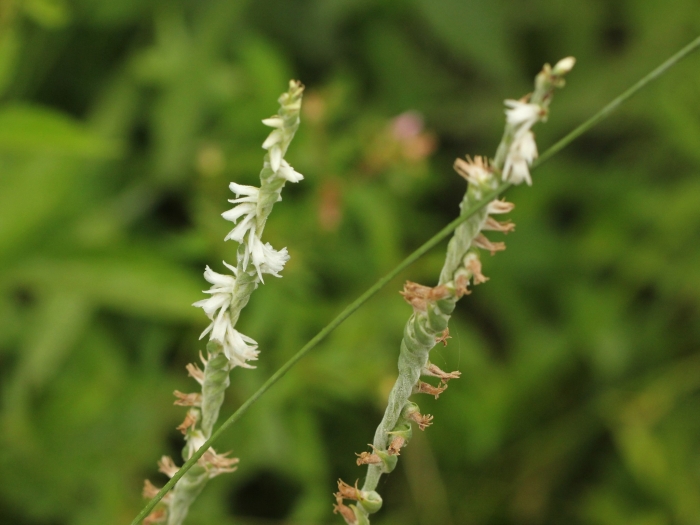Spring Lady’s Tresses
(Spiranthes vernalis)
Spring Lady’s Tresses (Spiranthes vernalis)
/
/

jrcagle
CC BY 4.0
Image By:
jrcagle
Recorded By:
Copyright:
CC BY 4.0
Copyright Notice:
Photo by: jrcagle | License Type: CC BY 4.0 | License URL: http://creativecommons.org/licenses/by/4.0/ | Rights Holder: jrcagle | Publisher: iNaturalist | Date Created: 2021-06-20T15:00:32-07:00 |



















































Estimated Native Range
Summary
Spiranthes vernalis, commonly known as Spring Lady’s Tresses, is an evergreen perennial herb that is native to a variety of habitats including moist meadows, open woodlands, grassy slopes, and wetlands across the Eastern United States. It typically grows to a height of 0.5-2 feet (0.2-0.6 meters) and a width of 0.5-1 feet (0.2-0.3 meters). This plant is characterized by its spiraling column of delicate, fragrant flowers that are white to cream with a hint of yellow, blooming in the spring and early summer. The flowers are particularly showy due to their unique arrangement and are a highlight in any garden during their blooming season.
Spring Lady’s Tresses is valued for its ornamental flowers and its ability to adapt to a range of garden conditions. It is often used in native plant gardens, rain gardens, and as a component of meadow plantings due to its preference for moist environments. While it thrives in full sun, it can also tolerate partial shade, making it versatile for different garden designs. It requires medium amounts of water and well-drained soil to flourish. Although it is not commonly affected by serious pests or diseases, it can be susceptible to root rot if kept in overly wet conditions. Gardeners should be aware that while Spiranthes vernalis is not typically aggressive, it can spread through its rhizomes and may need to be managed to prevent unwanted spread.CC BY-SA 4.0
Spring Lady’s Tresses is valued for its ornamental flowers and its ability to adapt to a range of garden conditions. It is often used in native plant gardens, rain gardens, and as a component of meadow plantings due to its preference for moist environments. While it thrives in full sun, it can also tolerate partial shade, making it versatile for different garden designs. It requires medium amounts of water and well-drained soil to flourish. Although it is not commonly affected by serious pests or diseases, it can be susceptible to root rot if kept in overly wet conditions. Gardeners should be aware that while Spiranthes vernalis is not typically aggressive, it can spread through its rhizomes and may need to be managed to prevent unwanted spread.CC BY-SA 4.0
Plant Description
- Plant Type: Herb
- Height: 0.5-2 feet
- Width: 0.5-1 feet
- Growth Rate: Moderate
- Flower Color: White, Cream, Yellow
- Flowering Season: Spring, Summer
- Leaf Retention: Evergreen
Growth Requirements
- Sun: Full Sun, Part Shade
- Water: Medium
- Drainage: Medium, Fast
Common Uses
Bee Garden, Butterfly Garden, Deer Resistant, Low Maintenance
Natural Habitat
native to a variety of habitats including moist meadows, open woodlands, grassy slopes, and wetlands across the Eastern United States
Other Names
Common Names: Spring Ladies’-Tresses, Upland Ladiestresses
Scientific Names: , Spiranthes vernalis, Gyrostachys linearis, Gyrostachys reverchonii, Gyrostachys xyridifolia, Gyrostachys praecox, Ibidium vernale, Ophrys aestivalis, Spiranthes ensifolia, Gyrostachys ensifolia
GBIF Accepted Name: Spiranthes vernalis Engelm. & A.Gray